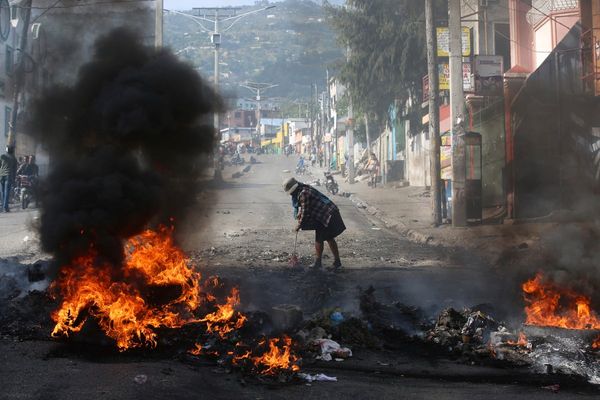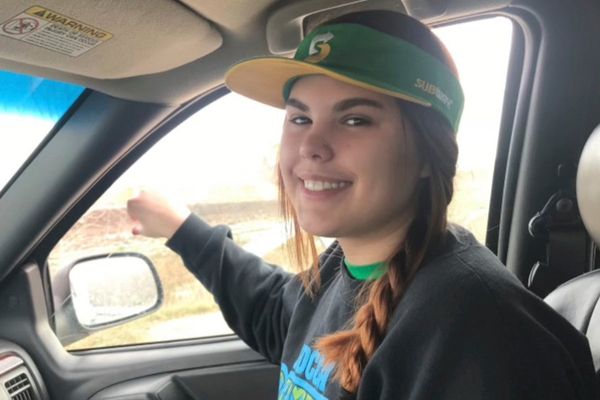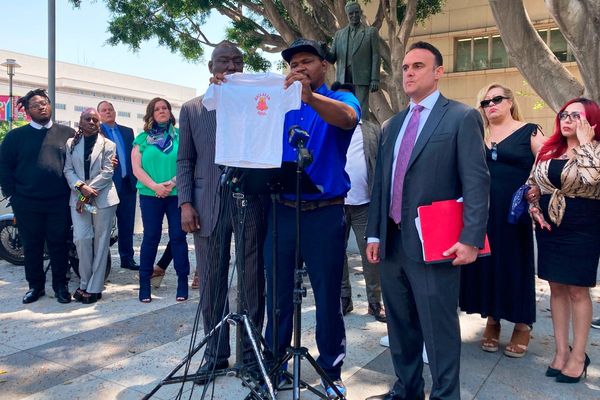
The children at Bright Kids nursery in Kyaukse, a town south of Mandalay, were taking a nap when the earthquake struck on Friday afternoon. The two-storey building collapsed with dozens of children aged between two and four trapped inside. For hours, rescuers sifted through the rubble, searching desperately for survivors.
“We were clearing the building using diggers and rescuing people with manual tools,” said Thar Nge, a volunteer. They needed better equipment – metal cutters and generators – but made use of what they had. Thar Nge helped carry a four-year-old girl to safety. She pleaded, over and over, for him to save her, he said. He held a bottle of water to her mouth before her dusty body was freed.
The girl was among 12 children saved, along with four teachers. A further 16 children and a teacher were found dead. Thar Nge barely had time to feel any emotion.
Afterwards, his team of 11 volunteers moved onwards across Kyaukse, one of many areas devastated by Friday’s earthquake.
Similar scenes have played out across central Myanmar, with teams of volunteers using anything at their disposal to free survivors, digging with their bare hands and crawling through collapsed structures, often with no safety equipment.
The injured are taken to hospitals that were already overstretched before the disaster and are now completely overwhelmed. According to Myanmar’s military junta, more than 1,600 people have been killed and more than 3,400 injured in the quake. Aid agencies warn that it could take days or weeks for the real scale of the disaster to emerge.
On social media, images have painted a picture of destruction – historic monasteries, pagodas and mosques in central areas crumbled or partially collapsed, the wooden stilt houses that surround the famous Inle Lake, in Shan State, flattened. There are pictures of apartment buildings, hotels, and roads, all damaged.
Online there are pleas too from desperate relatives. On Facebook a man in Mandalay called for help, filming a mass of concrete slabs, wooden beams and metal bars. His mother and children were beneath the rubble, he said. No rescuers had come.
In another Facebook video a man, choked with emotion, prays for his mother. He sits beside her body, still trapped in debris, holding her hand.
“Please go on to a good life, Mum. Please don’t worry about me,” says the man, who is in Naypyidaw, Myanmar’s capital.
Naypyidaw has also been badly hit. A rescue worker there said teams had worked through the night, adding the most difficult thing was having to give up on people who were trapped.
“I feel very heavy. There are still a lot of bodies to move. Not just move, but dig up,” said the volunteer, who asked to remain anonymous. Bodies were being sent to a morgue in the city, but there was no electricity there.
In both Naypyidaw and Mandalay there simply weren’t enough teams to respond to all calls. “Charity teams and youths are collaborating to do rescue works. Yesterday, incidents happened everywhere. We have to manage with the human resources we have,” said Thein Min Tun, another volunteer rescue worker in Mandalay.
The quake compounds a desperate situation in Myanmar, which has been gripped by conflict since 2021 when the military seized power, ousting the elected government of Aung San Suu Kyi. The currency, the kyat, has since crashed and 15.2 million people – nearly a third of Myanmar’s population – are facing acute food insecurity.
On Friday, the junta made a rare appeal for foreign aid. Aid agencies warn that coordinating the response will be complex. Key roads have been damaged, phone and internet are cut off, power is down and some airports closed. The military, which according to local reports continued airstrikes after the quake, also has a track record of blocking humanitarian aid from areas where its opponents are active.
The junta is struggling to halt an armed opposition movement made up of pro-democracy civilian groups formed after the coup, as well as more established ethnic armed groups. It has lost control of swathes of territory on its borders. The junta does retain control of the main cities, including Mandalay and areas of the centre, though local people have little faith in its ability to respond to the disaster.
“There’s no management or public statements from the authorities. Government services did nothing; they just patrolled around the town yesterday,” said a local man who, like many, asked not to be named, fearing reprisals from the authorities. He said he was at Ramadan prayers at Ywar Taw mosque when the earthquake struck. “No one came to rescue us. We had to save people on our own.” He believes 28 people died at six mosques in his township, Yamethin.
Mosques were especially vulnerable as some were up to 100 years old, he said, and the authorities, which are associated with the Buddhist Bamar majority, had not granted permission for the structures to be renovated.
For now, volunteers do what they can. After the nursery, Thar Nge’s team went to a collapsed silk and fabric store where seven people were trapped, a restaurant where six bodies were recovered, a tea shop where two bodies were found, and a market where they discovered three more.
They go back and forth from rescue sites to hospitals and cemeteries.
Han Myo Aung, a fellow volunteer, said there was still an overwhelming amount of work, even if the chances of finding more people alive were low, adding: “We also need to demolish the buildings at risk of collapsing.”
Their local hospital was still receiving patients but allocating them to an open space nearby, because of the risk of further collapse. The team had been overjoyed to find the children at the collapsed nursery, he said. But they are finding only about 10% of the people they rescue are alive.
“This situation is very difficult, trying to save people from beneath the rubble,” he said. “We have never experienced a quake like this before.”







